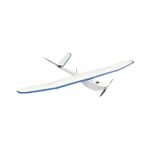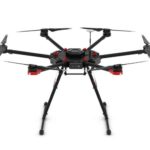Fixed Wing or Multi-Rotor?
Should I buy a fixed-wing or a multi-rotor for my application?
At Unmanned Systems Source, we receive calls on a daily basis from customers who ask this very question. We always follow up with a question of our own, “I’m not sure, it depends. What’s your application?”.
And so begins a conversation.
Choosing between a multi-rotor or a fixed-wing is not always a straight forward choice. In fact, there are a number of factors that should be considered before making a selection.
Common questions we ask interested buyers, include: What are the project objectives? How much area needs to be covered? What sort of flight duration is required? Are you collecting data? What is your payload? What is your experience level? And, finally, what is your budget?
Once we understand the client’s needs and the operational environment, the choice comes into focus.
Fixed Wing Considerations 
Fixed-wings are generally better suited for rural environments and are work horses for many commercial and scientific applications. Though they may not offer the maneuverability of a multi-rotor, when it comes to flight times and coverage, fixed wings excel.
Other advantages include:
- Capability of operating at higher altitudes
- Faster flight speeds
- Power and capacity to carry heavier and, in some cases, multiple payloads – which in turn means the ability to gather more sophisticated data
- Option to choose from a wider variety of sensors
- Extended flight times, 60 minutes +
- Larger coverage
In regards to the operational area required, it depends on the vehicle. Fixed wings need more space for takeoffs and landings. While hand-launched models deploy quickly, others require a launching rail.
The initial costs to purchase a fixed-wing systems are higher but these systems are fairly inexpensive to maintain due to their simpler design. And there is usually less operational “down-time” for fixed-wings.
 Multi-rotor Considerations
Multi-rotor Considerations
The use of multi-rotors has exploded in recent years in large part due to their affordability and ease of use. But multi-rotor advantages certainly extend beyond these two points.
Other advantages include:
- Highly maneuverable in flight which is great for urban and tightly confined areas
- Ability to hover – which make it an excellent choice for inspections of infrastructure that require close-up examination
- Easy to operate and deploys quickly
- Small takeoff and landing footprint
- Affordable price-point
In flight, multi-rotors are incredibly maneuverable and can hover which make them the preferred choice for detailed inspection work and urban areas where space limitations are at a premium. They are also the obvious choice for video and photography work.
Though multi-rotors provide only limited flight duration (15-20 minutes on average), their operational flexibility makes it a favored choice for many urban applications.
Ultimately, the choice between a multi-rotor or fixed-wing for a specific application depends on a variety of factors. Understanding the strengths and limitations of each vehicle goes a long way in helping inform your decision.
Click here for the Fixed Wing or Multirotor Infographic!



 Multi-rotor Considerations
Multi-rotor Considerations